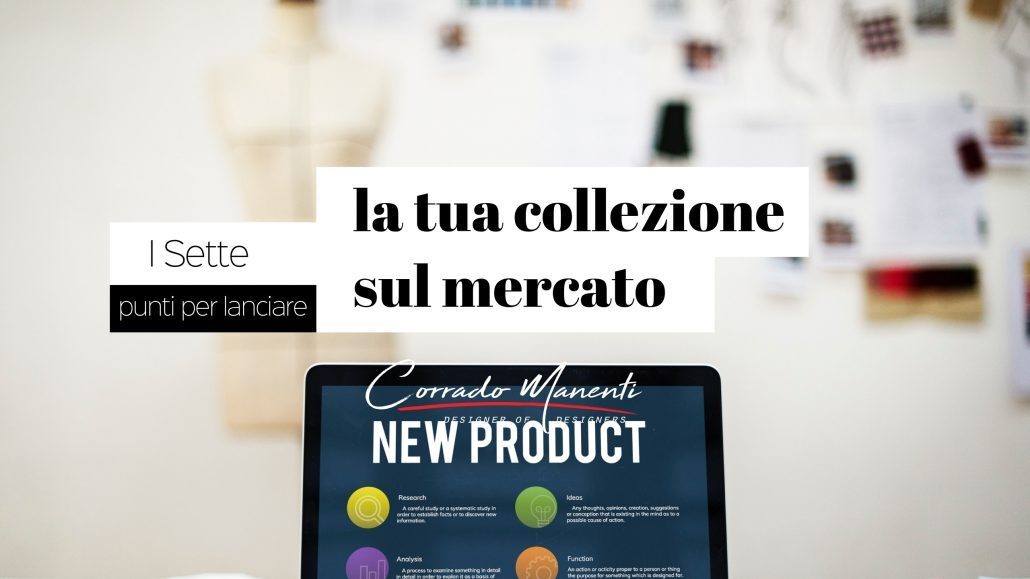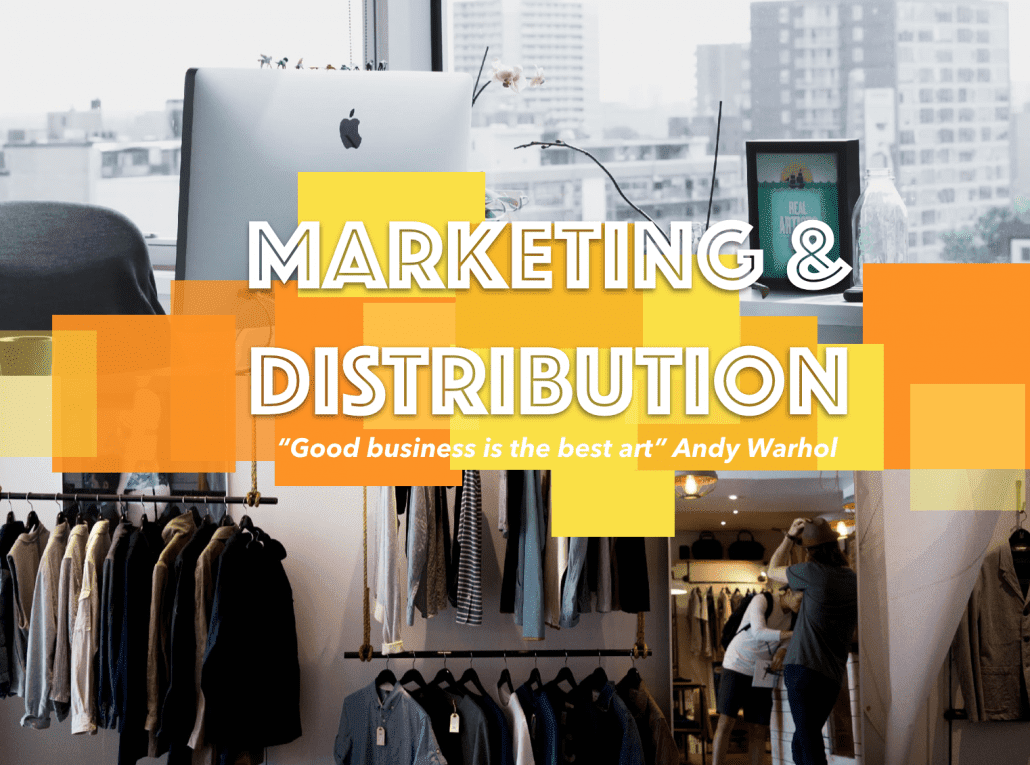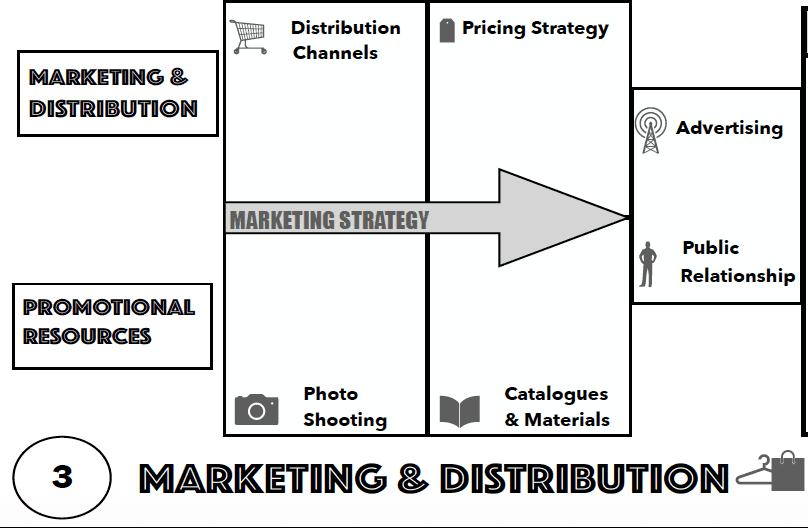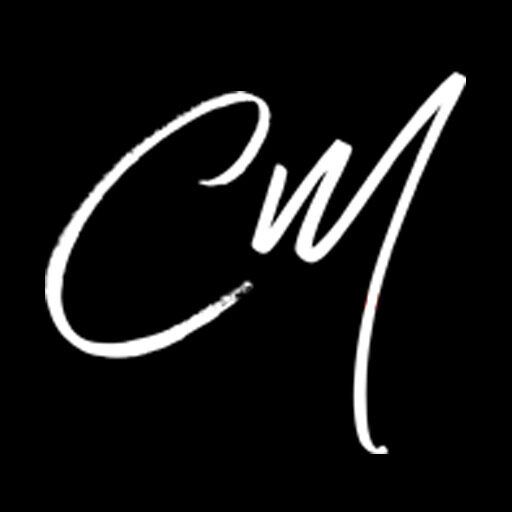The real challenge of becoming a designer is not to create a collection, it is to sell it
There is a moment in every designer's life where dreams and expectations of success brutally meet reality and the market: we are talking about the moment of the sale.
One of the most critical things, regardless of the sector or 'what' you are going to propose, is to enter the market and propose and (try) to sell our creations.
In this article we will look at various ways to launch your fashion collection and understand the mechanisms that govern the market.

If you are fresh out of fashion school and new to the 'real' world of business, you may be very disturbed by the truth that we can summarise in the phrase of the Master of Sales Frank Merenda:
"A freelancer is a salesman. His job is to find customers to sell to. His profession, i.e. his technical skills, are his product."
Frank Merenda -Selling Sucks-.
We as fashion designers are fashion professionals, we want to build our own brand and thus begin our journey of self-entrepreneurship leading to prosperity and success. To do this we have to sell our creations.
One of the tips I mentioned in my article How to Create a Fashion Start-up

6) TAKE ART
..AND PUT IT
BY
Do you know what the only real difference is between a ramshackle, cursed artist and a successful one?
The former thinks only and exclusively about making art, he does not care about pleasing, he does not care about his audience, selling his works is almost a pity and that is why he starves himself, The latter, on the other hand, is capable of selling.
But we are not artists, we are entrepreneurs! We have to fall in love with our ability to turn ideas into something beautiful and meaningful that people wear and desire and, above all, buy!
The question is: "How can I get my goods to my end consumer?"
"If you don't have a system to sell you will remain at the mercy of the customer's buying system".
David Sandler
WE USE THE FASHION BUSINESS DESIGNER:

Before we start looking at the seven ways to market your collection, I want to show you where we are in the canvas.
Sales strategies and channels are in the third quadrant, the one on the bottom left dedicated to marketing and distribution of our products. If you are using the Fashion Business Designer it will be in this section where you go to work and put your post-its.
If you DO NOT KNOW the Fashion Business Designer is the methodology I created to help you develop your idea into a sustainable business model. It is a big board that gives you a complete view of what you are doing. You print it out in a nice big size, hang it on the wall and stick post-its on it as your collection takes shape.
You can find it here videos and free resources.

We are in quadrant three of the canvas in the section: Distribution Channels
There are only three strategies you can adopt before choosing how to launch your collection.
- You can sell directly using traditional channels or via online
- Or sell to shops or chain shops and let them sell to the end consumer
- Or try to do both (complicating your life enormously)
Here are the seven ways to launch your own collection on the market:
- Websites / Ecommerce platformsWe are all good online buyers, this leads us to believe that others will easily buy our product on the Internet, but will they really? Since the launch of the Internet virtually all we need is a site where consumers can buy. You can even visit sites like Shopify and use their templates to develop your online shop and sell through the Shopify programme. App: this is the fastest growing direct-to-consumer platform at the moment. With smartphones widely used, it is possible to develop an app that people can go to directly and buy. Many people buy that way.
- Wholesale trade: There are large groups of shops with their buyers, unfortunately it is not always easy to find the right interlocutor. However much everyone says in words that they support Italian-made products and young designers, in practice no one trusts a brand that no one knows. Many shops, however, may be interested in your proposals, perhaps to start on 'consignment'. The same applies to many online platforms. Few will buy your products directly to resell them. Most will offer 'dropshipping', i.e., once the sale is made, they will send the courier and take care of the logistics.
- Cwholesale trade on online platforms: There are online platforms especially for emerging and non-emerging brands that for a monthly fee allow us to upload our products and show them to retailers or chain buyers. Not all of them are reliable and produce results quickly, but it is definitely one more tool.
- Trunk Shows / Events / In home party - Bringing samples directly to customers and then taking orders is a very safe way to build your business. You don't have websites, apps or wholesale costs nor do you have to carry inventory. Of course you are limited by the number of people at the event but your ability to keep your margins high makes this a very attractive way to sell your product.
- Trade Fairs / Markets - There are a large number of fairs and markets throughout Italy where you can rent a stand and show your product to direct customers or shopkeepers. The problem is that the competition will be very high and it will be difficult (but not impossible) to get yourself seen. Not knowing you and your brand, most of the meetings and people who will stop by your stand will be casual. The only thing that will give you a big advantage will be a location with as much footfall as possible. If your product is particularly visual and impactful, you can attract a lot of buyers that way. The amount of activity you can do here is not huge, but it is a good way to test your product and especially to collect contacts that you will then cultivate and turn into sales.
- Temporary Store / Showroom: In large cities you can find Temporary Stores or Showrooms where you can display your goods. The difference is that a Temporary Store is, as the name says, "a temporary shop" where you and other brands can display your products that will be sold to end customers. In most cases included in the price will be a salesperson and you only have to carry the goods and then collect the sales. The shop will keep the goods for the opening period on consignment. A showroom, on the other hand, is a place where, for a price or a percentage of sales, your products (your sample collection) are displayed and offered to national and international buyers who are invited to fashion weeks and so on. It is a kind of invitation-only trade fair. You will receive the orders which you will then fulfil, you will also be asked for a commission on the order in most cases.
- Open your own shop: It might seem trivial or too difficult and expensive. But opening your own shop could be a good strategy. The cons are the seemingly much higher costs than the other solutions [Apparently because renting a shop costs less than staying in a showroom for the same period] And it is in front of everyone's eyes that in city centres, which are not very busy and not very touristy, there are more closed shops than open ones. But I know a good number of success stories of young designers who have reconciled the need for a workshop/atelier with a point of sale. This way you can present your product exactly the way you think it should be presented. You play by your own rules 'at home' without other competitors. Many famous brands have impressive flagship stores and do this to increase brand recognition and consistency. Having a 'physical' point of reference in the 'real world' gives you instant credibility.

Direct Selling VS Indirect Selling
Is it better to sell our products directly or leave the final sale to others?
Ah, the eternal dilemma! The choice between holding on to one's treasure and try their luck in the vast sea of independent trade, or rely on the delegating convenience of the let others sell the fruits of one's labours. A bit like choosing between cooking a gourmet dinner for friends or handing them the menu from the first restaurant that comes along and hoping for the best. At the end of the day, the dilemma is: Better to enjoy total control and potential gain (ah, the smell of freshly printed banknotes!), or perhaps to rest on one's laurels while others take care of the dough?
On the one hand we have the sell directly. Here, ladies and gentlemen, the thrill of thepure entrepreneurshipThat virtual handshake with the customer, the display at trade fairs without fear of rejection, the triumph of every single sale that smacks of personal glory.
It is the way of the heroes, the Spartans of commerce! But let's not forget, oh no, that every coin has its downside: managing stock, shipping, complaints, and the dreaded bureaucracy. Besides, do some people really enjoy spending their evenings printing shipping labels?
On the other side we find the let others sell. Ah, the sweet, sweet freedom of not having to say 'sorry, your package is stuck in customs' or not knowing the customer service hotline number by heart.
Relying on intermediaries, distributors, physical shops or online platforms is a bit like hiring an auctioneer for your goods: he shouts, you cash in. But even here, the scam lurks in the shadows: percentages on sales that disappear into thin air, limited control over how the product is presented, and that perennial feeling that someone, somewhere, is making money behind your back.
THE PROS OF DIRECT SELLING:
- We keep most of the profit margin for ourselves as we have no other intermediaries with whom we have to share
- We can follow our strategy without being influenced by market logic (sales, restocking)
- We decide how long and when a collection should last
- We must have a functioning sales system whether online or offline
- Our Brand will be known and successful in proportion to our Marketing and Sales skills and capabilities
I CONS OF DIRECT SELLING:
- We have more margin but also more costs both online and offline
- We will hardly be able to predict production volumes before 3-4 collections and risk having unsold goods in stock
- We must learn to be true 'marketing experts' because our product will not sell itself
- You must have a logistics system to dispatch orders and possibly handle returns.
- You must have a system to find new customers and retain them over time
There are pros and cons for each. Your financial situation and marketing strategies must be considered. Research each method thoroughly before making any decision. After making your decision, put together a comprehensive and executable marketing plan to ensure success.


Hi, I deal in handmade jewellery made in sicily... how could I propose my creations to a shopkeeper? Is it better to sell in bulk, or to leave what we consider to be the strong points of the collection, in his shop, and then give the sale a percentage?
Hello I am in charge of a clothing brand how can I make it known, and find outlets as a wholesaler, can you advise me?
Good evening, how can I contact you to collaborate on the creation and sale of my collection? Thank you.
Good evening you can contact us from this link below to be contacted: https://calendly.com/beadesigner/conosciamoci?month=2021-01
Or write an e-mail to [email protected]
Hello, I would like to ask a question. I have dreamed of being a fashion designer for a long time, but unfortunately I cannot afford education at a university or fashion academy. Since 2018 I have been taking part in a sewing course, to refine my technique, and I have a lot of talent to show. How can I make myself stand out? I can do many things drawing, sewing and much more.
I am acquiring my art diploma at the evening high school and then plan to enter university in the meantime I would like to work in the fashion industry as I acquired my regional vocational qualification in the industrial clothing sector in 1999 I would like to design brands and sew them
I pose a question. Is it true that the facon costs of a collection are billed at twice the rate of mass production? In other words, can a subcontractor charge a higher figure for making a collection garment?
Hello Thank you for your comment! The answer is "it depends". Usually there is a surcharge even of 50% between a sample cost and a production cost, usually Facon is always influenced by quantities and obviously the more you produce the lower the cost of making. If you are a subcontractor account you should always have a higher figure to make a collection garment (sample or prototype) also because if you work with big brands most of the time they produce the samples in Italy and then go and produce them in Romania etc. I hope I have answered your question! If you want to know more, please write to me: [email protected]
I want to sell my fabric designs as farem7
Good morning I would like to know which trade fairs are suitable for launching a line of eco bags made from recycled materials such as coffee pods
Hi, I have just realised my first beacwer collection. At the moment it is on sale in a showroom and will soon be available online on e-commerce, but how can I expand my sales network and offer my product to other shops or abroad?